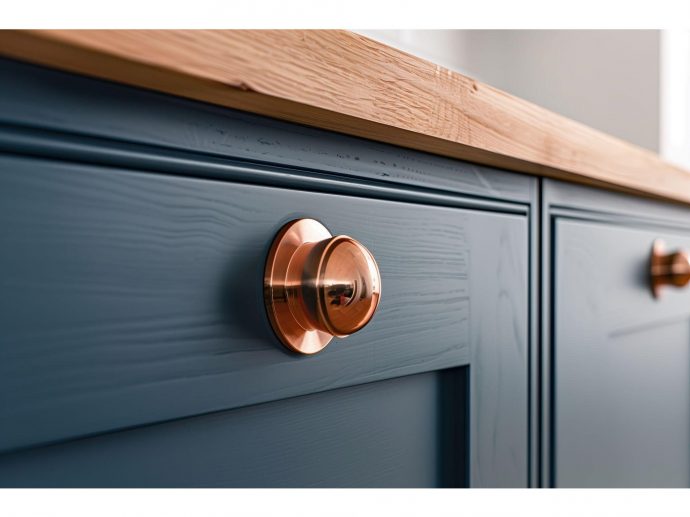Categories more
- Adventures (17)
- Arts / Collectables (15)
- Automotive (37)
- Aviation (11)
- Bath, Body, & Health (77)
- Children (6)
- Cigars / Spirits (32)
- Cuisine (16)
- Design/Architecture (22)
- Electronics (13)
- Entertainment (4)
- Event Planning (5)
- Fashion (46)
- Finance (9)
- Gifts / Misc (6)
- Home Decor (45)
- Jewelry (41)
- Pets (3)
- Philanthropy (1)
- Real Estate (16)
- Services (23)
- Sports / Golf (14)
- Vacation / Travel (60)
- Watches / Pens (15)
- Wines / Vines (24)
- Yachting / Boating (17)
A Guide to Tactile Design: Why Quality Hardware Matters
Published
09/15/2025Small details create the most significant impact in a well-designed space. These elements provide a sense of quality and cohesion. Architectural hardware is a perfect example of this principle. It offers a tactile connection to your home’s design every day. For example, selecting premium hardware, like Rocky Mountain cabinet knobs, can completely transform a simple piece of furniture.
Choosing the right ardwhare is a deliberate process that elevates the entire aesthetic of a room. This guide explains how to select pieces that complete your vision.
Understand Material and Finish
The material of your hardware defines its look and feel. Solid metals like bronze and brass offer substantial weight, which communicates quality. You can feel the difference between solid metal and a plated alternative. Artisanal hardware often shows subtle marks from its creation, adding character to each piece.
The finish complements the base material. It can dramatically alter the hardware's appearance. For instance, a dark bronze finish makes a room feel historic, while polished nickel creates a contemporary feeling. Some popular choices offer distinct visual effects.
- Polished Finishes: These offer a bright, reflective surface. Polished nickel or chrome works well in clean, modern kitchens and bathrooms.
- Satin or Brushed Finishes: These have a softer, muted appearance. They show fewer fingerprints and provide a subtle elegance.
- Antique Finishes: These are chemically treated to look aged. They add a sense of history to traditional or rustic designs.
Explore the Concept of Living Finishes
A living finish lacks a protective lacquer coating. This allows metal like brass or bronze to interact with the environment. Oxygen and oils from your hands slowly change its color over time.
This process is called developing a patina. The hardware darkens in some areas and lightens where touched frequently, creating a unique pattern. A living finish tells a story about how you interact with your home.
Match Hardware to Your Design Style
Your hardware should be an integral part of your home’s design. It needs to align with the existing architectural style and decor. Cohesion creates a polished, intentional look.
Select Hardware for a Modern Interior
Modern design emphasizes clean lines and simple forms. Hardware should follow this principle. Look for geometric shapes like squares and rectangles. Long bar pulls are a popular choice for modern cabinetry. For an integrated look, consider recessed or edge pulls.
Finishes should be sleek. Polished chrome, satin nickel, and matte black are excellent options. They complement minimalist palettes and simple cabinet profiles.
Choose Hardware for a Traditional Space
Traditional interiors favor detail and ornamentation. The hardware should reflect this craftsmanship. Choose pieces with intricate designs and classic shapes. Egg knobs, decorative drop pulls, and classic bin pulls are fitting choices. Decorative backplates add another layer of elegance.
Materials like aged brass and oil-rubbed bronze add warmth. These finishes work well with detailed millwork and classic cabinets.
Find Hardware for Transitional and Eclectic Designs
Transitional design blends modern and traditional elements. Hardware is a great tool to connect these two styles. You can pair a classic knob shape with a modern satin nickel finish. You can also use a simple bar pull with a warm bronze finish.
For eclectic spaces, hardware can be a unifying element. Using consistent hardware across different furniture pieces creates order. Alternatively, select unique pulls that act as jewelry for a statement cabinet.
Practical Considerations for Selection
Beyond aesthetics, function is important. You interact with your hardware daily. It must be comfortable and appropriately scaled for its task. The tactile experience matters as much as the visual one.
The feel of a knob or pull in your hand is key. A sharp-edged pull might look good but feel unpleasant. Handle a sample before you buy. Open a drawer with it to test its comfort and grip.
Proportion is also a key factor. A small knob on a large door will look lost. A massive pull on a small drawer will seem overpowering. A good guideline is to choose a pull about one-third the length of the drawer front. For wide drawers, two pulls provide better balance and function.
Consider these points:
- Heavier doors and drawers need larger pulls for better leverage.
- Think about who uses the hardware. Levers are easier to operate than knobs for people with limited hand strength.
- Ensure the hardware size is proportional to the cabinet door or drawer front.
- Check the projection, or how far the hardware sticks out. This prevents snagging clothes in narrow hallways or busy kitchens.
Concluding Thoughts on Hardware Selection
Choosing architectural hardware is a crucial finishing step in home design. The right pieces combine beautiful materials, a complementary style, and practical function. This process requires careful thought. From the weight of solid bronze to the patina of a living finish, each choice contributes to the final result.
Remember that hardware is one of the few design elements you physically touch every day. Thoughtful selection creates a consistent source of tactile satisfaction. It reinforces the quality of your home and completes its design story.















